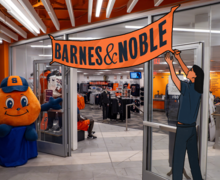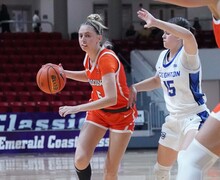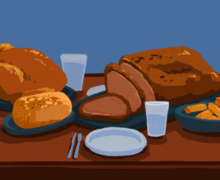The economics of crime: Syracuse officials discuss how high poverty levels relate to rising crime
Neighborhood Watch Series: Part 1 of 3
Between July and September 2011, the city of Syracuse saw more than 1,700 crimes total on the North, East, West and South sides of the city.
These crimes include murder, non-negligent manslaughter, rape, robbery, aggravated assault, burglary, larceny, larceny from a vehicle and motor vehicle theft, according to data on the Syracuse Police Department’s website. SPD officials keep track of crime rates in the different districts of the city and organize the data in three-month increments.
For years, high crime rates have been an issue in the city. Approximately 156 crimes were reported in Syracuse in the last two weeks, according to The Post-Standard’s reported crime database.
SPD Sgt. Gary Bulinski said crime rates tend to increase as summer approaches because there are more people on the street. Also, he said, teenagers contribute to the increasing crime rates in the summer because they are not in school.
‘That’s more time that they can be involved in something that might lead them to commit a criminal act,’ Bulinski said.
Although the city’s crime rates are consistently high, Syracuse officials say pinpointing the cause is a task that has proven to be quite difficult.
Though many residents think crime is racially- or culturally-driven in the city, Common Councilor Bob Dougherty said he believes there is a different motivating factor for those committing crimes.
‘I don’t think it’s an ethnic thing. I think it’s a poverty thing,’ Dougherty said. ‘A lot of the people who commit crimes are poor people.’
Dougherty said this makes sense because many people in the city are living under the poverty level. He said he often believes crimes such as robbery are committed out of necessity.
From 2006-2010, 31.1 percent of people living in Syracuse were considered to be living under the poverty level. In all of New York state, 14.2 percent of people were considered to be below the poverty level, according to the U.S. Census Bureau.
Dougherty, who is the councilor for the Syracuse Southside, said the majority of residents are black. In Syracuse, there are more minority groups than white residents who live in poverty, he said. Because of this, he said, minority residents are more likely to get involved in crime and drugs.
‘I think poor people are going to be the people who are dealing drugs,’ he said. ‘If you’re gonna say that a lot of the people on the Southside are poor, then that’s who’s going to be doing the crimes.’
Common Councilor Jake Barrett’s district is the Northside of Syracuse. He said this district is the only one of the four largest districts that has seen an increase in population. This, he said, is largely due to the rising number of immigrants who are moving to the city.
Barrett said he agrees that crime, in general, is a direct result of the lack of economic opportunity in an area.
Between July and September 2011, there were 260 larcenies recorded on the Northside, according to the SPD website. This is in comparison to 193 on the Eastside, where Syracuse University is located; 179 on the Westside; and 169 on the Southside.
Barrett said crimes such as larcenies or robberies are called ‘crimes of opportunity’ and are more common on the Northside than violent crimes, such as murder, assault or rape.
Violent crimes are more prevalent on the Southside, Barrett said, because most of the violent crimes are being done by black residents to other black residents. The Southside of the city has the highest population of black residents.
Barrett said he thinks it is hard to say what city officials can do to help curb the high crime rates.
‘We’re talking about a very large problem,’ he said.
But Dougherty, the councilor of the Southside, said he believes one great initiative city officials have already taken was the installation of security cameras on the Near Westside.
Last year, Syracuse police moved to install the cameras on the Near Westside in hopes of curbing the frequency at which gun and drug crimes were occurring.
Crime significantly decreased in that part of the city from 2010 to 2011, according to data released by SPD officials. Arrest charges in the area decreased by 49 percent, overall reported crimes decreased by 29 percent and drug-related arrests decreased by 47 percent.
‘The cameras have really done a great job,’ said Dougherty, who spends a lot of time on the Near Westside. ‘I think the neighborhood feels a lot safer.’
Dougherty said there is a noticeable difference in the number of young adults who are selling drugs on the street corners because of the cameras.
He said he is lobbying to have security cameras installed on South Avenue because of the amount of gang violence in that area.
‘They’re not gonna be hanging around on the corner, selling drugs with a camera there,’ Dougherty said.
There are many other positive initiatives city officials have made, such as the revival of the Syracuse Citizen Review Board, Dougherty said. The board’s purpose is to review citizen-filed complaints against SPD officials. This, Dougherty said, will help keep police officers in check.
Although the city is taking great strides to help curb the amount of crime in the city, Dougherty said it is still a major issue that officials need to continue to address.
‘This is something we can’t turn a blind eye to,’ he said. ‘People shouldn’t be afraid to travel through the city.’
Published on April 17, 2012 at 12:00 pm
Contact Stephanie: snbouvia@syr.edu | @snbouvia





